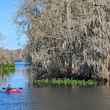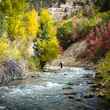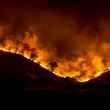Portland and Seattle are in the Pacific Northwest, a region known for its rain and cool temperatures. Until recently, the all-time high temperature in Portland was 107 degrees, a record set back in 1965. On Saturday, June 26th, 2021 — a little over a month ago — the city set a new record of 108 degrees. The next day — a Sunday — Portland broke its all-time record yet again with an astounding 112 degrees. On Monday, June 28th, the city literally blew that number away when it reached a hard-to-fathom 116 degrees. The average high temperature in Portland, Oregon at the end of June is around 76 degrees.
The fact that Portland set a new record high temperature on three consecutive days is certainly newsworthy. The fact that this happened at the end of June — a month not normally associated with high temperatures in Oregon — is more so. The fact that the new record exceeded the old 1965 record by 9 degrees and topped the date’s average temperature by 40 degrees is astounding. And when we consider that Seattle also set a new high temperature record of 108 degrees, and that Salem, which is 45 miles south of Portland, topped out at 117 degrees … well, it’s probably not all that surprising to learn that a subsequent headline in the Seattle Times proclaimed: “Crushing heat wave in Pacific Northwest and Canada cooked shellfish alive by the millions.”





























